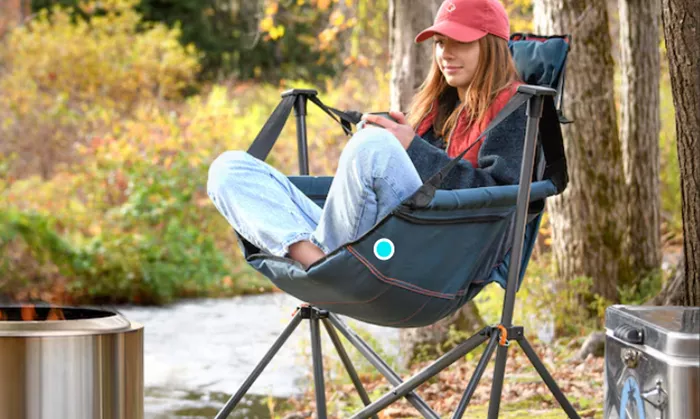Solo camping is an incredible way to connect with nature, find peace, and enjoy personal reflection. Whether you’re an experienced camper or just starting, this guide will cover everything you need to know for a successful solo camping trip. From gear selection to safety tips, we’ll ensure you’re well-prepared for your adventure.
Choosing the Right Campsite
Research Locations
Before you head out, research potential camping locations. National parks, state parks, and designated campgrounds are great options. Look for areas that allow solo camping. Online resources like the Leave No Trace website can help you find suitable sites.
Consider Accessibility
When choosing a campsite, think about how you’ll get there. If you’re new to solo camping, select a location that is easily accessible. Look for places with short hiking distances or drive-in campsites. This will help you ease into the experience without overwhelming yourself.
Safety and Regulations
Check the rules of the area. Some locations have specific regulations about campfires, pets, and food storage. Be aware of any permits you may need. This ensures you have a safe and enjoyable experience.
Essential Gear for Solo Camping
Shelter Options
Tent: A lightweight, easy-to-set-up tent is ideal. Look for models that are easy to pitch alone. A two-person tent offers extra space for gear.
Tarp: A tarp can provide additional protection from rain or sun. It can also serve as a ground cover for your tent.
Sleeping Gear
Sleeping Bag: Choose a sleeping bag that suits the season. A sleeping bag with a temperature rating suitable for your trip will keep you warm.
Sleeping Pad: A sleeping pad adds comfort and insulation. An inflatable pad is lightweight and compact.
Cooking Equipment
Portable Stove: A small camping stove is essential for cooking meals. Look for models that are easy to use and lightweight.
Cookware: Bring lightweight pots and pans. Consider a compact cooking set that nests together for easy packing.
Utensils: Don’t forget utensils like a spork, knife, and a can opener.
Clothing
Pack clothing appropriate for the weather. Layering is key. Bring:
Base Layer: Moisture-wicking shirts and leggings.
Insulating Layer: Fleece or down jackets for warmth.
Outer Layer: A waterproof and breathable jacket.
Backpack
Invest in a good-quality backpack. It should be comfortable and fit well. Look for features like padded straps, hip belts, and ample storage.
Food and Water
Meal Planning
Plan your meals ahead of time. Choose simple, lightweight foods that are easy to prepare. Some ideas include:
Breakfast: Instant oatmeal, granola bars, or powdered eggs.
Lunch: Wraps with deli meats, cheese, and veggies.
Dinner: Freeze-dried meals, pasta, or rice dishes.
Water Supply
Always carry enough water for your trip. Bring a water filter or purification tablets if you plan to use natural water sources. A collapsible water jug is also handy for carrying water.
Safety Tips for Solo Camping
Tell Someone Your Plans
Before you leave, inform a friend or family member of your camping plans. Share details about your destination and expected return time. This is crucial for safety.
Stay Connected
While you may want to disconnect, carrying a fully charged cell phone or a satellite communicator can be a lifesaver in emergencies. Consider bringing a portable charger.
Emergency Kit
Pack a small first aid kit that includes:
- Band-aids and gauze
- Pain relievers
- Antiseptic wipes
- Any personal medications
Wildlife Awareness
Understand the wildlife in your camping area. Store food securely and keep a safe distance from animals. Research local wildlife to know what to expect.
Setting Up Camp
Choosing Your Spot
When you arrive, pick a flat area for your tent. Avoid low spots where water could collect. Set up your tent away from hazards like dead trees or overhanging branches.
Establishing a Fire Ring
If fires are allowed, create a small fire ring using rocks. Always follow local regulations regarding campfires. Keep your fire contained and never leave it unattended.
Organizing Your Space
Keep your gear organized. Store food and cooking equipment away from your sleeping area to prevent attracting wildlife. Use dry bags to protect clothing and gear from moisture.
Solo Camping Activities
Exploration
Take time to explore the surrounding area. Hiking, birdwatching, or simply wandering can enhance your experience. Bring a map or download trail apps for guidance.
Journaling
Solo camping offers a great opportunity for reflection. Consider bringing a journal. Writing about your thoughts and experiences can deepen your connection with nature.
Photography
Capture the beauty of your surroundings. Photography can help you remember your adventure. Bring a camera or use your phone to document stunning landscapes or wildlife.
Meditation and Relaxation
Use your time alone to relax and meditate. Find a quiet spot to sit and enjoy the sounds of nature. This can help reduce stress and improve your mental well-being.
Packing Up and Leaving No Trace
Clean Up
Before you leave, ensure your campsite is clean. Pack out all trash and leftover food. Leave no trace behind. This preserves the area for future campers.
Proper Fire Extinguishing
If you had a fire, make sure it’s completely out. Pour water on the ashes and stir until cool. Ensure the fire is out before leaving.
Conclusion
Solo camping is a rewarding experience that allows you to connect with nature and yourself. By choosing the right campsite, packing essential gear, and following safety tips, you can have a memorable adventure. Whether you seek solitude or a chance to recharge, solo camping can be a transformative experience. Embrace the outdoors, enjoy the tranquility, and create lasting memories in the wild. Happy camping!
Related topics:
- Top 5 Multi-Fuel Camping Stoves
- Best Freeze-Dried Camping Meals
- The Best Winter Sleeping Bags: Guide to Staying Warm and Comfortable

